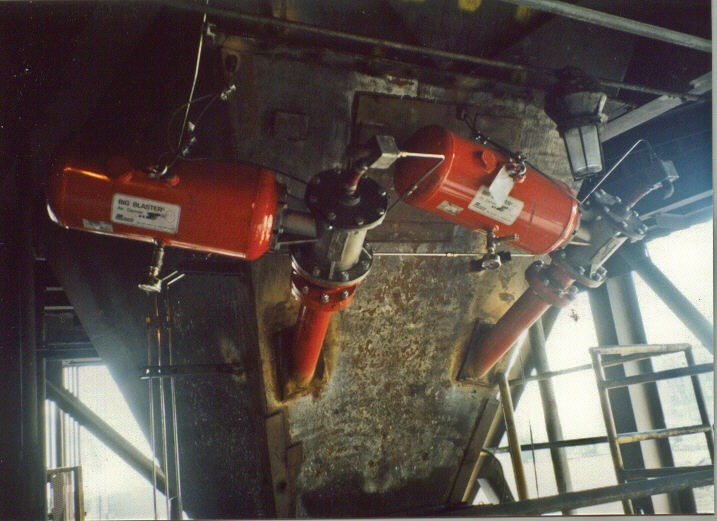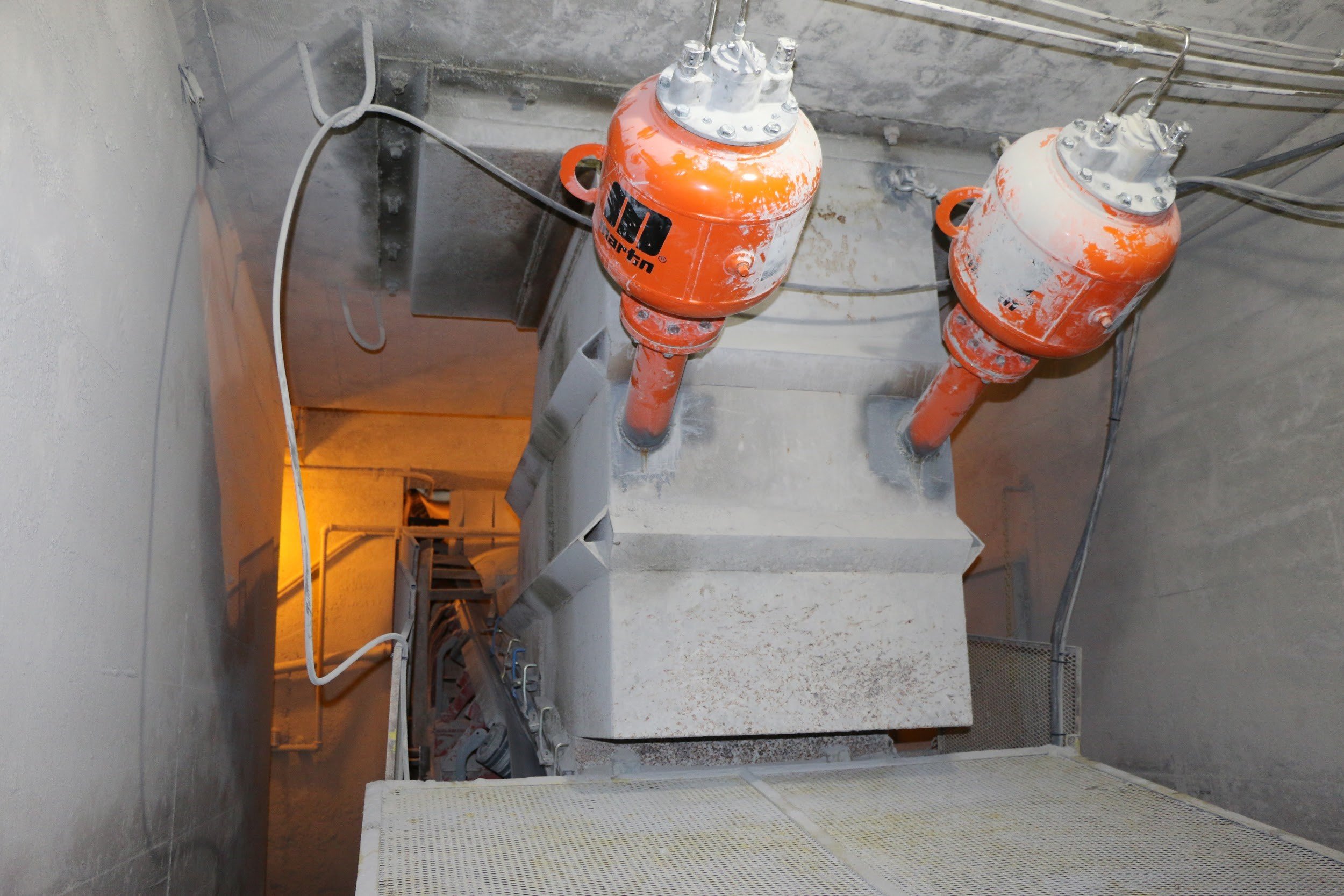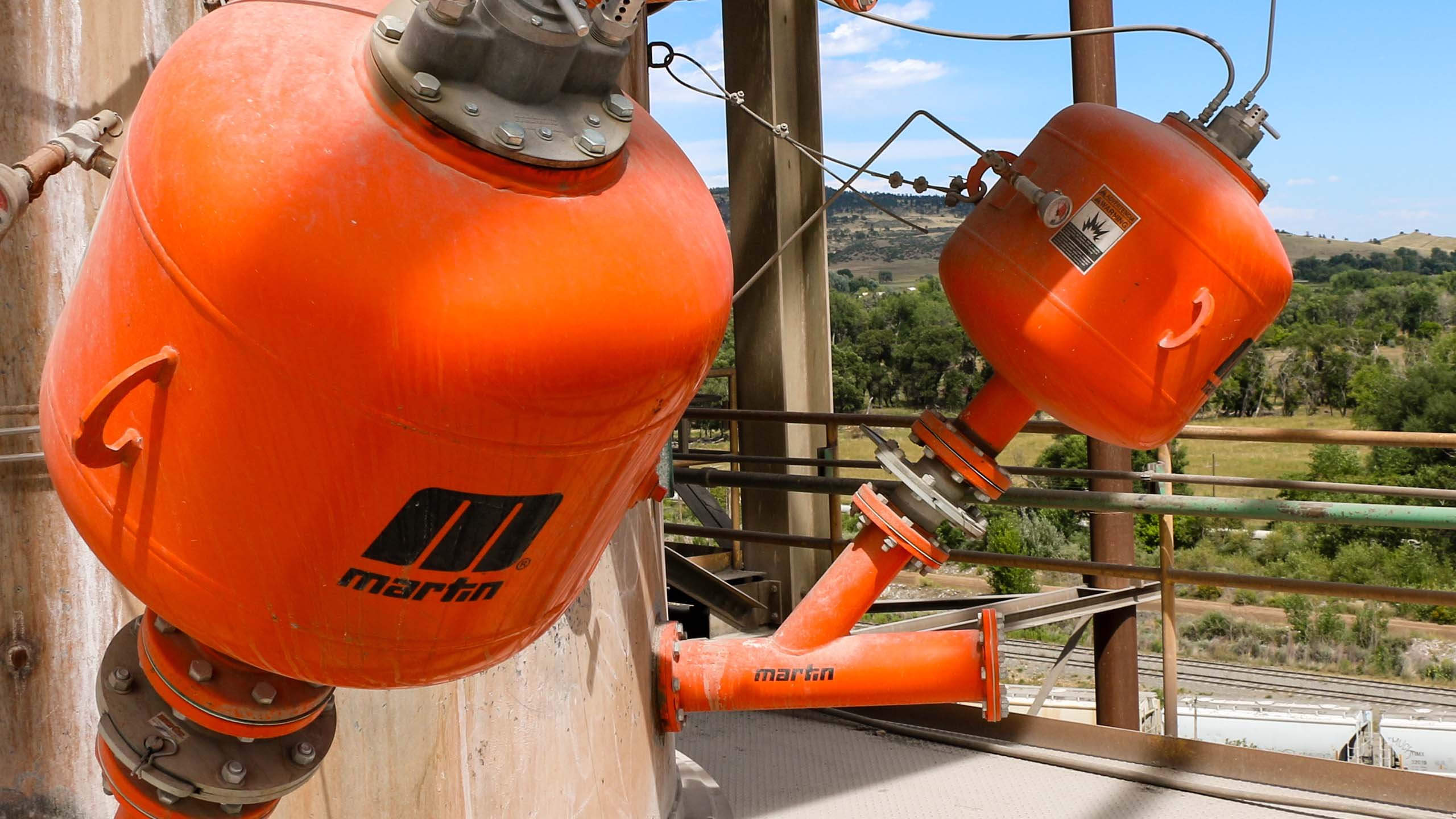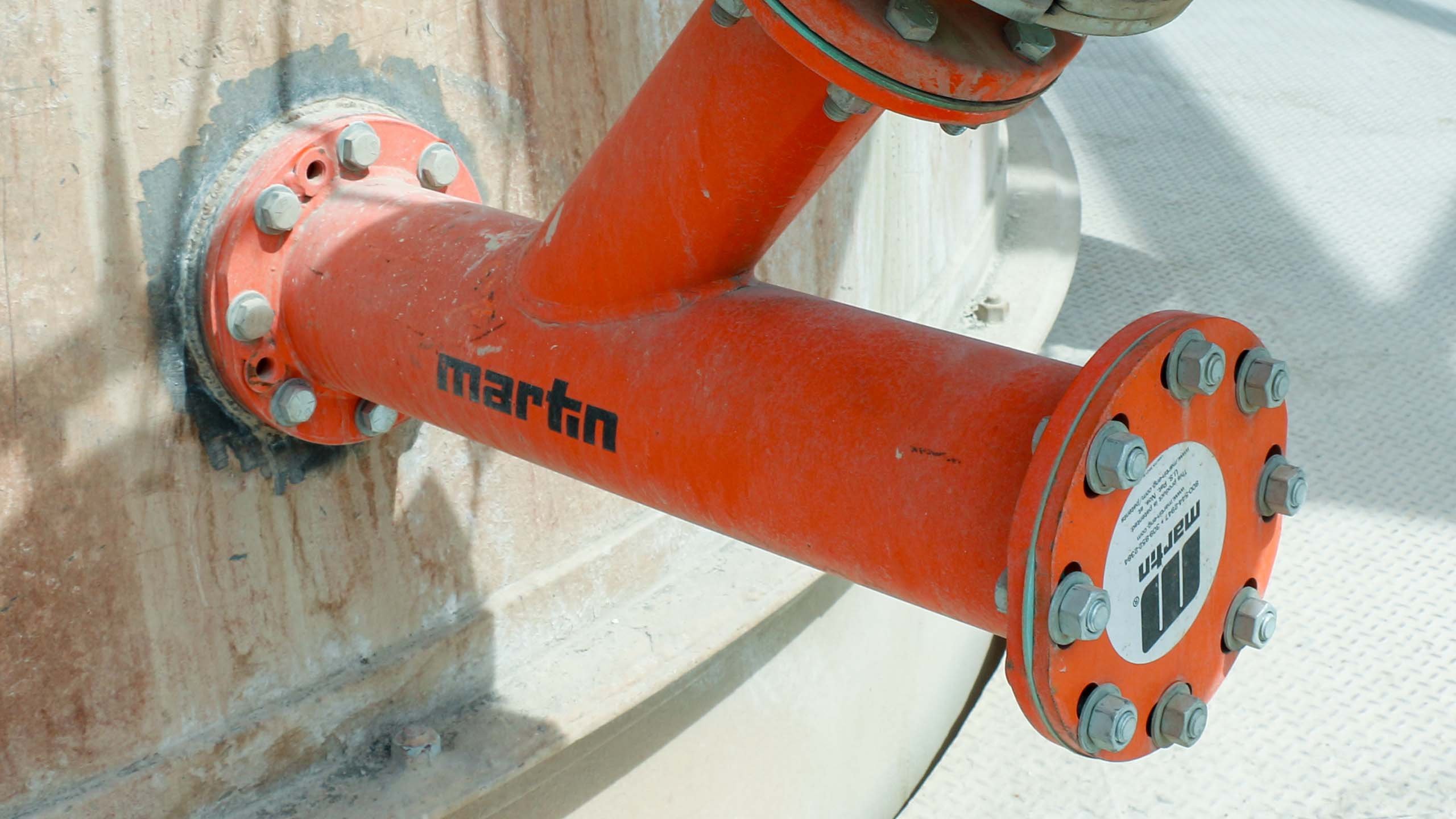Air cannon systems can be an effective means of preventing the buildup of materials in transfer chutes, storage vessels, and process equipment such as preheater towers and clinker coolers.
Sometimes referred to as blasters, air cannons shoot bursts of compressed air into a chute to dislodge built-up materials. The systems themselves are essentially just reservoirs of factory-compressed air attached to fast-acting discharge valves and tied to a system that controls the pattern of the bursts. Because of the higher speed of escaping air, blasters can be used to effectively keep a wide area free of buildup and carefully designed systems can effectively keep an entire chute clear.

The nozzles from which air is released are embedded within the chutewall, each connected either to a separate air cannon or a larger central air reservoir. These nozzles should all be positioned to direct the blast toward the outlet or direction of flow. The nozzles must be carefully designed so that they can effectively dislodge any materials that do build up and so they do not offer any additional edges on which materials can catch and accumulate. This generally means embedding them below the level of the chutewall. Nevertheless, the movement of the bulk material may wear the nozzles, and larger lump sizes can deform or destroy the nozzles.
The number and distribution of air cannons in a chute depends on the types of materials and the design of the chute, but in general, one air cannon can usually keep clear an area between 1.5 and 2 square meters (15 to 20 square feet).
Air cannons with air volume of 50 liters (1.75 cubic feet) have shows good results in chute applications, but these systems come in a variety of sizes, both in terms of air reservoir and discharge diameter.
In addition to the size of the air cannon, designers should vary the firing sequence to take into the account the conditions of the chute, the materials being conveyed and the local climate. Once an appropriate sequence is established, it can be programmed into an automated system so the system will not require attention from personnel.
Air cannons are often used with stickier materials that cannot be effectively cleared by vibrators. These materials often create less dust, limiting any concerns about added air pressure. However, for materials that will produce dust, conveyor systems should be certain to account for the added positive air pressure created by air cannons.





















Leave Comment